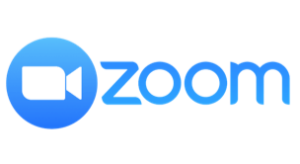BCH 2333/2733
Midterm 2 Tutoring Sessions.
Book your sessions.
 online learning
online learning
Dr. Shuhendler Test 3: 'Protein Structure and Folding' on February 27th for Test 3 - Will include DNA structure.
Dr. Musgaard Midterm 2: 'Protein Structure and Folding' on February 28th | 'DNA Structure, Lipids and Protein Binding' on March 1st
Dr. FX students: You are welcome to ANY of the Review Sessions.
$40
for 4-Hours
Protein Structure
and Folding
Review Session Details
- Kozlowski: Lectures W4B, W5, W6, W6B, W7
- Boddy: Quiz 3
- Review amino acid side chain properties (i.e., pKa, charges, stereochemistry)
- Dihedral angles for secondary structure (i.e., phi and psi)
- Newman Projections for psi/phi angels
- Drawing Helical wheels
- Ramachandran plot
- Properties of helices
- Properties of Beta-sheets
- Supersecondary structures and motifs
- Levinthal’s Paradox
- Protein folding thermodynamics
- Protein folding pathways
- Quaternary structure (i.e. C2, C3, D2, D3 etc.)
- Review Session will include problem solving from past Midterm questions.
- All registered students will receive a "Midterm Package #3" that includes multiple Midterms/Quizes related to the above topics from previous years given by uOttawa Professors.

BCH2333/2733: Thermodynamics, Buffers, Lipids and Carbohydrates
$40.00
SKU: N/A
Category: Uncategorized
Related products
$40
for 4-Hours
DNA Structure, Lipids and
Protein Binding
Review Session Details
- Review primary DNA structure (i.e. base tautomerization, classic base pair H-bonding, c2/c3 endo sugar rings)
- Understand the inter- and intramolecular interaction in a DNA double helix
- Analyse and understand DNA secondary structures (i.e. DNA helices: A, B, and Z)
- Remembering Chargaff's Rule
- Understand properties of triple DNA helices (H-DNA)
- Palindromes and formation of hairpins and
- DNA denaturation and melting curves
- Types of lipids and their structures
- Lipid membrane properties (i.e. fluidity, lateral and transverse diffusion, and cholesterol)
- Fatty acid nomenclature
- Understanding general ligand binding (i.e. formulate equation and associate it to Kd)
- Learn to manipulate the simple Kd equation into complex ones
- Graphically understand how protein-ligand system is interpreted
- Cooperativity in ligand binding (i.e. Hill plot)
- Assess the two types of cooperativity models (MWC vs. KNF model)
- Apply protein-ligand cooperativity to oxygen transport in the body

Related products
Abdullah is a top-rated tutor with 7+ years of teaching experience.
As a recent PhD graduate from the University of Ottawa, he has worked along with many of the CHM BCH 233/2733 Professors. His lesson plans will always begin with must-know fundamental concepts and end with examples from previous midterms and final exam questions.
Recommended by 200+ uOttawa students. Join one of his review sessions and decide for yourself!


